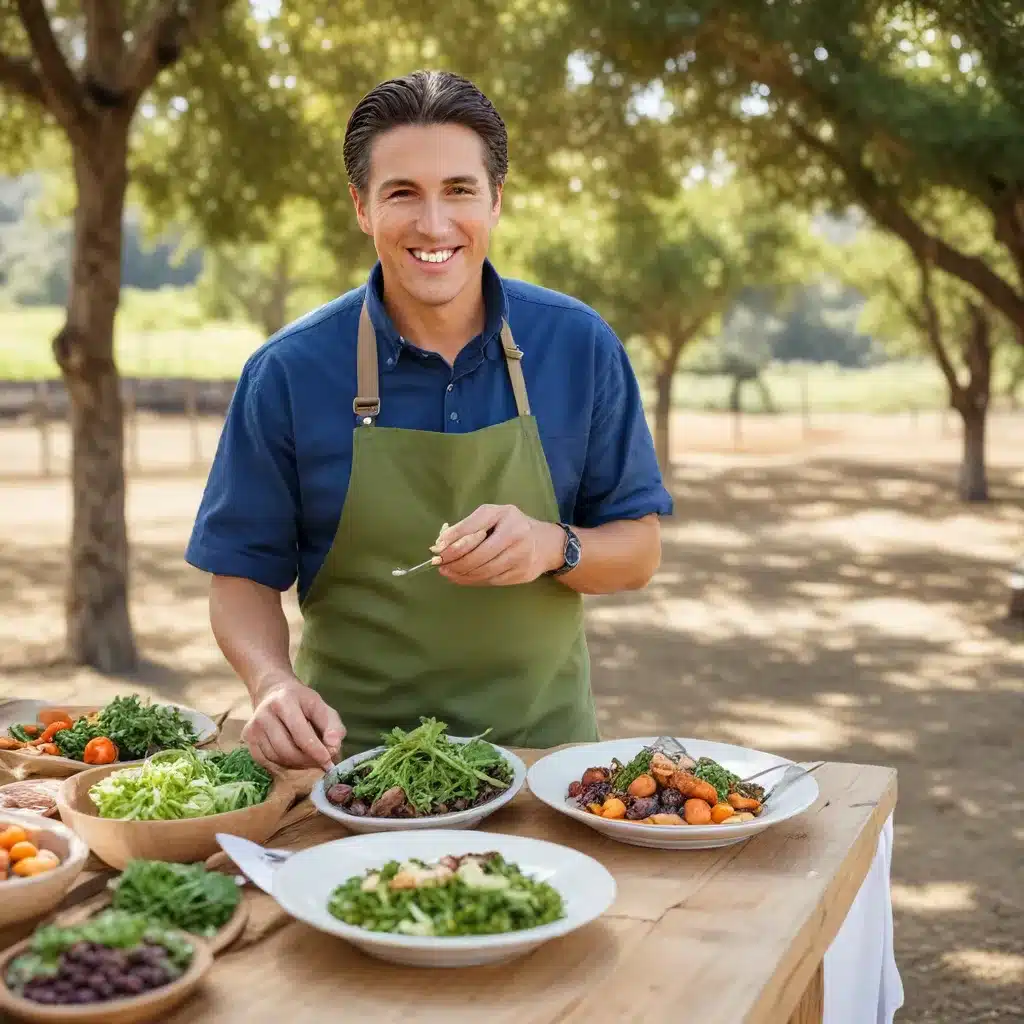
As a seasoned culinary expert, I’ve had the privilege of exploring the vibrant and ever-evolving farm-to-table landscape of California. From the redwood-dotted foothills of the Sierra Nevada to the sun-kissed vineyards of Sonoma, this state has become a mecca for innovative chefs, passionate farmers, and discerning diners who celebrate the bounty of the land.
The Essence of California Cuisine
At the heart of California’s culinary renaissance is a deep appreciation for the region’s bountiful natural resources and a commitment to sustainable, locally-sourced ingredients. The farm-to-table ethos has taken root across the state, transforming the dining experience into a celebration of the local terroir. Chefs in California have embraced this philosophy, using their culinary prowess to showcase the unique flavors and textures of the state’s diverse agricultural bounty.
One of the hallmarks of California cuisine is its emphasis on seasonal freshness. Chefs work closely with local farmers and producers to source the finest, peak-of-season produce, ensuring that every dish is a vibrant reflection of the current harvest. This commitment to seasonality not only results in unparalleled flavor but also fosters a deep connection between the kitchen and the land.
Pioneering the Farm-to-Table Movement
California has long been at the forefront of the farm-to-table movement, with chefs and restaurateurs leading the charge in redefining the dining experience. In the 1970s, pioneers like Alice Waters of Chez Panisse in Berkeley championed the idea of sourcing ingredients directly from local farms and celebrating the inherent flavors of the produce. This revolutionary approach not only transformed the restaurant landscape but also inspired a new generation of culinary innovators.
Today, the farm-to-table ethos permeates every corner of the state, from the bustling urban centers to the quaint rural enclaves. Restaurants like SingleThread in Sonoma County and Zazu Kitchen + Farm in Sonoma have taken the farm-to-table concept to new heights, crafting exquisite multi-course tasting menus that showcase the region’s finest seasonal offerings.
Uncovering Hidden Culinary Gems
While the renowned restaurants of California’s major cities often steal the spotlight, the state’s smaller, off-the-beaten-path communities are home to a wealth of culinary treasures waiting to be discovered. Take, for instance, the charming town of Auburn in the Sierra Nevada foothills. This once-overlooked destination has undergone a remarkable culinary renaissance, with eateries like Josephine and Tap & Vine serving up innovative, locally-sourced fare that rivals the offerings of its big-city counterparts.
Similarly, the idyllic town of Carmel-by-the-Sea on the Central Coast has long been a haven for food and wine enthusiasts. From the elegant bistro fare of Chez Noir to the Oaxacan-inspired cuisine of Cultura, this picturesque village offers a diverse array of dining experiences that celebrate the region’s bounty.
Honoring California’s Diverse Terroirs
California’s culinary landscape is as diverse as the state itself, with each region boasting its own unique terroir and culinary traditions. In the north, the cool, coastal climate of Sonoma and Napa lends itself to the production of world-class Pinot Noir and Chardonnay, which are often paired with delicate seafood and seasonal produce.
Further south, the warmer inland valleys of Paso Robles and the Santa Ynez Valley in San Luis Obispo County are known for their bold, fruit-forward red wines, such as Cabernet Sauvignon and Zinfandel. These robust varietals complement the heartier, more rustic fare found in the region’s farm-to-table eateries.
And in the Central Coast, the influence of the Pacific Ocean creates a temperate climate that supports a wide range of agricultural crops, from avocados and citrus to artisanal cheeses and olives. Chefs in this region have mastered the art of blending these diverse ingredients into innovative, flavor-forward dishes that showcase the bounty of the land.
Celebrating the Artisans Behind the Scenes
Beyond the talented chefs and restaurateurs, California’s farm-to-table movement owes much of its success to the dedicated network of small-scale farmers, ranchers, and producers who tirelessly cultivate the state’s agricultural riches. These unsung heroes are the backbone of the local food system, providing the high-quality, sustainably-grown ingredients that fuel the culinary creativity of the region.
In places like the Auburn area, for example, you’ll find family-owned farms like Four Tines Farmstand, which sell their fresh produce directly to the community on Sundays. These intimate connections between producer and consumer not only ensure the freshness and quality of the ingredients but also foster a deep appreciation for the hard work and commitment required to bring these flavors to the table.
The Future of California’s Culinary Landscape
As California continues to lead the way in the farm-to-table movement, the state’s culinary landscape is poised for even greater innovation and evolution. Chefs and food producers are constantly pushing the boundaries, exploring new techniques, and embracing emerging food trends that celebrate the region’s unique terroir.
From the rise of urban agriculture and the growing popularity of regenerative farming practices to the increasing demand for plant-based and hyper-local cuisine, the future of California’s food scene is one of boundless creativity and unwavering commitment to sustainability. As a culinary expert, I’m excited to see how the state’s talented chefs and producers will continue to redefine the dining experience, offering diners a deeper connection to the land and a true taste of California’s culinary bounty.
Whether you’re seeking out the renowned establishments of the state’s major cities or exploring the hidden gems of its small towns, the farm-to-table ethos that permeates California’s culinary landscape is sure to leave a lasting impression. So, embark on a journey of discovery and savor the flavors that make this region a true gastronomic paradise.

